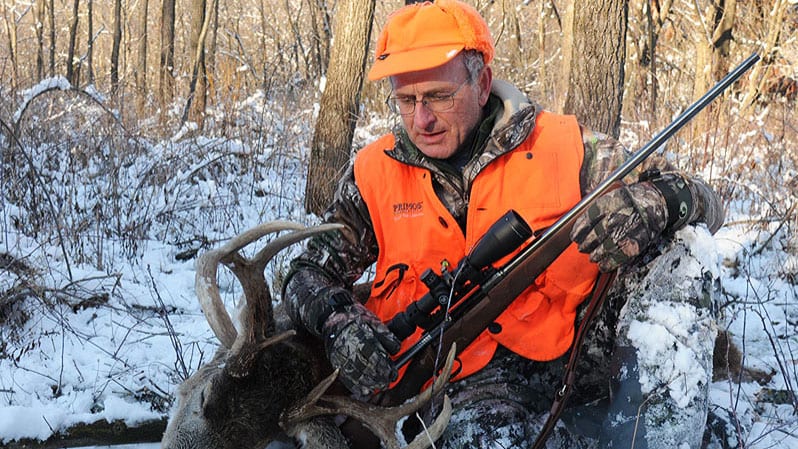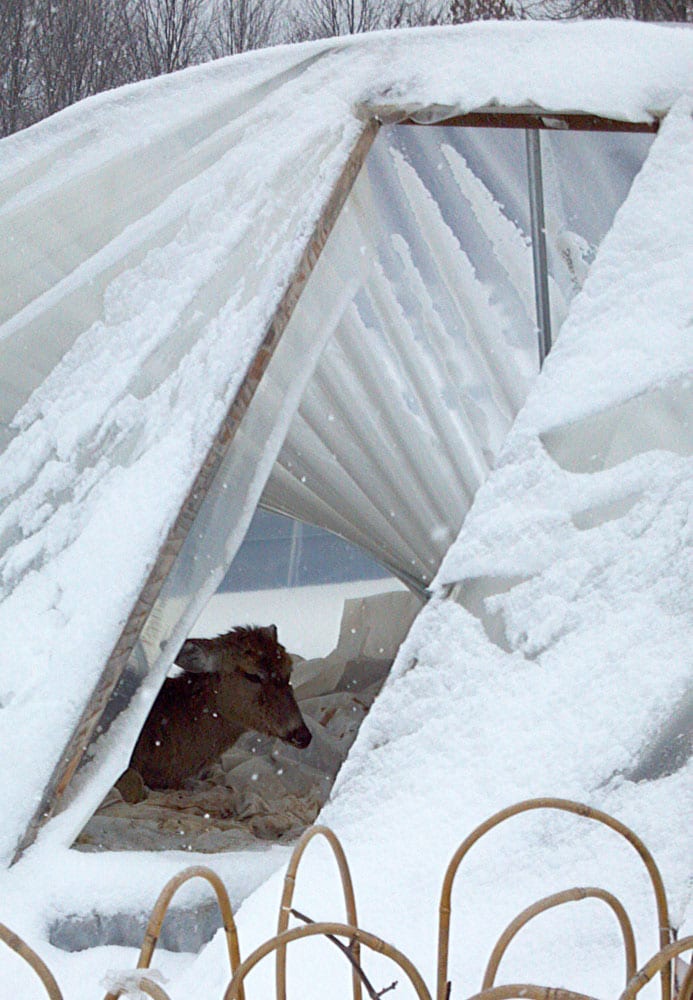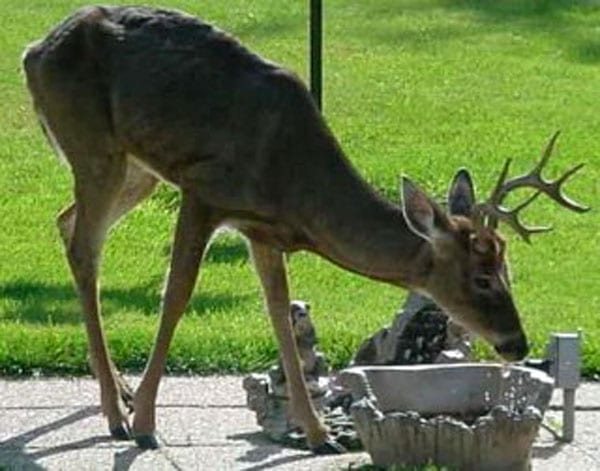Imagine what you would have thought the Wednesday morning after Super Tuesday had your favorite website’s top headline read, “Voters provide current snapshot of presidential primaries.”
And imagine what you’d have thought if the article’s lead paragraph read: “Ohio, Florida, Illinois, Missouri and North Carolina held elections Tuesday, and generated 13.84 million votes, of which 7.2 million (52 percent) were Republicans.”
You’d have yelled: “That tells me nothing! Who won?”
But that’s how the Wisconsin Department of Natural Resources announced the latest bad news in mid-March about chronic wasting disease in the state’s deer herd. Instead of saying CWD infection rates hit a record 9.5 percent despite record-low sampling efforts, the agency merely announced it found 295 sick deer among the more than 3,100 tested in 2015.
That tells us nothing. Is the disease still getting worse?

CWD infection rates in Wisconsin worsened for the 10th straight year in 2015, approaching double digits for the first time despite record-few samples collected by the Department of Natural Resources.
Digging Deeper for Data on CWD
After reading that deceitful press release, I went online, looked up CWD test results on the DNR’s website, and compared 2015’s data with previous years. Make no mistake: The DNR’s biologists conscientiously keep CWD data up to date and easily accessible on the agency’s website. But there it sits unless you have a computer, internet access and a calculator, or know who to call at DNR headquarters to get the information.
Meanwhile, DNR administrators work equally hard to keep CWD out of the news. That’s why the DNR

Deer stricken with CWD lose their fear of humans and often seek shelter inside or near buildings, greenhouses and other structures.
communications office ran basically the same headline in mid-March the past two years to announce the annual CWD results: “With help from Wisconsin’s hunters, sampling results provide current snapshot of CWD in Wisconsin.”
Maybe the headline mentioned Wisconsin twice to confirm our hunters didn’t provide a snapshot of CWD in Guam.
This is remarkable. Why must we beat such important information out of the agency that’s responsible for managing our white-tailed deer herd? Deer are arguably Wisconsin’s most prized and valuable wildlife species. The animal also provides the DNR its largest revenue source through hunting-license sales, and generates about $1.5 billion annually in hunting-related business across Wisconsin.
Besides, Gov. Scott Walker made the pursuit of deer-hunting happiness part of his election platform when seeking office in 2010. Once elected, he appointed a Deer Czar and two advisers for $125,000.
But yet the DNR deliberately disguises an ever-worsening disease and its looming impact on the herd and recreational hunting. If you plot those “snapshots” on a graph, you see the line rising faster every year. All the while, the DNR barely acknowledges CWD’s human-health uncertainties.
CWD Facts
So let’s review some CWD data the DNR didn’t include in its March 15 news release:
— At 9.5 percent, the record-setting 2015 CWD infection rate marked the state’s 10th straight annual increase.
— Recent infection rates were 6 percent in 2014, 5.3 percent in 2013, and 5.1 percent in 2012. In 2010, the rate was 2.9 percent, and in 2008 it was 1.46 percent.
— At 3,139 samples, the 2015 CWD testing efforts were a record low since the DNR increased its monitoring program after discovering the disease in February 2002.
— The previous record low for CWD tests was 5,321 in 2011.
— Despite testing 2,182 fewer deer in 2015 than in 2011, the DNR found 56 more CWD infections, 295 vs. 239.

This CWD-infected buck was photographed drinking water on a patio in southern Wisconsin.
— CWD infection rates in Richland County hit 9.9 percent in 2015 (37 positives from 373 samples).
— Richland County documented three CWD cases while testing 6,244 deer in seven years from 2002 to 2008, but has since found 105 infections while testing 3,647 deer.
— Richland County’s disease rate climbed from 0.75 percent in 2009, to 1.5 percent in 2011, 4.4 percent in 2013, 5.1 percent in 2014, and 9.9 percent in 2015.
— Iowa County’s CWD rate reached 23 percent overall in 2015 (152 of 660), while Sauk County’s reached 19 percent (59 of 309) and Dane County’s was 9.2 percent (34 of 369).
— CWD can infect deer of all ages, but the likelihood increases with time. In Iowa County during 2015:
* Buck fawns, 1 of 22 (4.5 percent) tested positive;
* Bucks 1.5 years old, 15 of 101 (14.9 percent) tested positive;
* Bucks 2.5 years old, 20 of 94 (21.3 percent) tested positive;
* Bucks 3.5 years old, 44 of 124 (35.5 percent) tested positive;
* Bucks 4 to 5 years old, 26 of 54 (48.1 percent) tested positive;
* Bucks 6 to 8 years old, 2 of 4 (50 percent) tested positive.
When planning its CWD-testing efforts for 2015, the DNR projected it would receive 4,000 samples statewide. Instead it took in 3,139, or 78.5 percent of its goal. Of the five large areas the DNR targeted for testing, only one – central Wisconsin – exceeded projections. Hunters in Portage, Marathon, Adams and Juneau counties provided 466 deer for testing, 66 more than the 400 the DNR sought. Two carried CWD.
Efforts elsewhere were:
— Washburn, Polk, Barron and Burnett counties: 173 tests, 275 sought (63 percent), no infections;
— Clark, Jackson and Eau Claire counties: 80 tests, 125 sought (64 percent), no infections;
— Marquette and Green Lake counties: 98 tests, 200 sought (49 percent), no infections;
— Southern farmland counties, 2,292 tests, 3,000 sought (76.4 percent), 293 infections.
Why didn’t hunters provide more samples? Maybe because the DNR did little to encourage them. Once again Gov. Walker and DNR Secretary Cathy Stepp didn’t mention CWD or encourage testing in their joint preseason pep talk.
And even though the DNR’s new electronic deer-registration system apparently worked well and pleased hunters, it likely curtailed the number of hunters bringing in deer for CWD testing.
When reading these worsening numbers, don’t forget that CWD is always fatal, killing deer about 18 months after they contract it. Also remember these numbers have kept climbing even as the Legislature and DNR cut funding and scientists for CWD monitoring since the 2010 election.
Maybe it’s time the DNR requires hunters to submit all antlered bucks for testing in CWD-monitoring areas.
And maybe the DNR, our governor and Legislature should quit pretending CWD is just our imagination.
As Flannery O’Connor wrote, “The truth does not change according to our ability to stomach it.”

 By
By 



